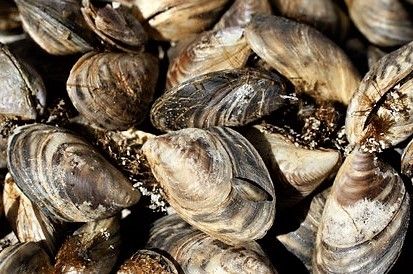Lake Michigan has Become Dramatically Clearer in Last 20 Years — But at a Steep Cost
Published on by Water Network Research, Official research team of The Water Network in Academic
Over the past 20 years, Lake Michigan has undergone a dramatic transformation. Here’s a look at how invasive mussels have changed the lake’s landscape.
By Tony Briscoe
Decades ago, Lake Michigan teemed with nutrients and green algae, casting a brownish-green hue that resembled the mouth of an inland river rather than a vast, open-water lake.
Back then, the lake’s swampy complexion was less than inviting to swimmers and kayakers, but it supported a robust fishing industry as several commercial companies trawled for perch, and sport fishermen cast their lines for trout. But in the past 20 years, Lake Michigan has undergone a dramatic transformation.
In analyzing satellite images between 1998 and 2012, researchers at the Michigan Tech Research Institute were surprised to find that lakes Michigan and Huron are now clearer than Lake Superior. In a study published late last year, the researchers say limiting the amount of agricultural and sewage runoff in the lake has had an immense impact. However, the emergence of invasive mussels, which number in the trillions and have the ability to filter the entire volume of Lake Michigan in four to six days, has had an even greater effect.

“When you look at the scientific terms, we are approaching some oceanic values,” said Michael Sayers, a research engineer at Michigan Tech and co-author of the study. “We have some ways to go, but we are getting a lot closer to Lake Tahoe. A lot of times, you’ll hear from people that the water is so blue it compares to something in tropical areas.”
While appealing, the clarity comes at a significant cost to wildlife. In filtering the lake, the mussels have decimated the phytoplankton, a single-celled, green algae that serves as the base of the food chain. For much of the past decade, prey fish, like alewives, have remained at historic lows, prompting state managers to scale back the annual stocks of prized predators, such as king salmon.
The startling evolution has called into question the future of Great Lakes marine life and the region’s $7 billion fishing industry.
“Clearer is not necessarily better,” said Robert Shuchman, co-director of the Michigan Tech Research Institute. “Clearer water means less phytoplankton in the water column, and they’re the basic building block in the food web. The idea is, the little fish eat algae, and the bigger fish eat the little fish.
“There are some folks out there now that think Lake Michigan and Huron could become ecological deserts from a fishing standpoint. The food web could totally collapse because you don’t have the various organisms you need to sustain it.”
For ages, the phytoplankton fed the zooplankton, which were eaten by small, foraging fish. As the fast-filtering mussels reduce the plankton populations, there isn’t enough food to support the diet of many foraging fish. In addition, there’s not enough plankton or nutrients clouding the water to hide these small prey fish from predator fish.
“It’s a game of hide-and-seek in a brightly lit environment,” said Henry Vanderploeg, a research ecologist for the National Oceanic and Atmospheric Administration.
Read the fill article at the Chicago Tribune
Media
Taxonomy
- Water Quality
- Environment
- Lake Management
- Water Quality Monitoring
- Water Quality Research